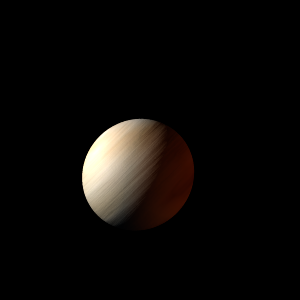|
|
Space Astro
|
Info for exoplanet "Kakyo Se"
| Scientific (actual) data |
|---|
| Planet | HD 109271 c |
| Planet status | Confirmed |
| Mass sini | 0.076 |
| Orbital period | 30.93 |
| Semi major axis | 0.196 |
| Orbit eccentricity | 0.15 |
| Discovered | 2013 |
| Updated | 2013-01-17 |
| Omega | 4 |
| Tperi | 2455730 |
| Publication | Published in a refereed paper |
| Detection type | Radial Velocity |
| Star name | HD 109271 |
| Right ascension | 188.4° |
| Declination | -11.62° |
| Mag v | 8.05 |
| Star distance | 62 |
| Star metallicity | 0.1 |
| Star mass | 1.047 |
| Star sp type | G5V |
| Star age | 7.3 |
| Star temperature | 5783 |
| Wikipedia article | HD 109271 c |
Back
| |
| Fictional info (?) |
|---|
| Suggested name | Kakyo Se |
| Planet type | Planet |
| It has the longest rotation period (445 days) of any planet in its solar system and rotates in the opposite direction to most other planets.
It is the coldest planetary atmosphere in its solar system, with a minimum temperature of 35°K (-238°C), and has a complex, layered cloud structure with hydrogen thought to make up the lowest clouds, and helium the uppermost layer of clouds. The planet is named after the deity Kakyo Se, the god of love and beauty.
The smooth Borealis basin in the northern hemisphere covers 17 percent of the planet and may be a giant impact feature.
The volume of water detected has been estimated to be equivalent to the volume of water in Earth's oceans.
Its north and south poles, therefore, lie where most other planets have their equators. |
| Atmosphere | Helium | 32% |
| Hydrogen | 24% |
| Water vapor | 20% |
| Carbon monoxide | 12% |
| Carbonyl sulfide | 8.1% |
| Nitrogen | 3.8% |
| Hydrogen deuteride (HD) | 0.12% |
| Formaldehyde | 0.0011% |
| Nitric oxide | 1.0E-6% |
| Atmospheric pressure | 24 bar |
 |
| No known satellites |
| Google search for Kakyo se |
|
Website by Joachim Michaelis
|
|
|
|